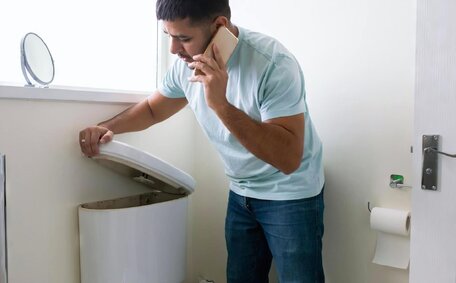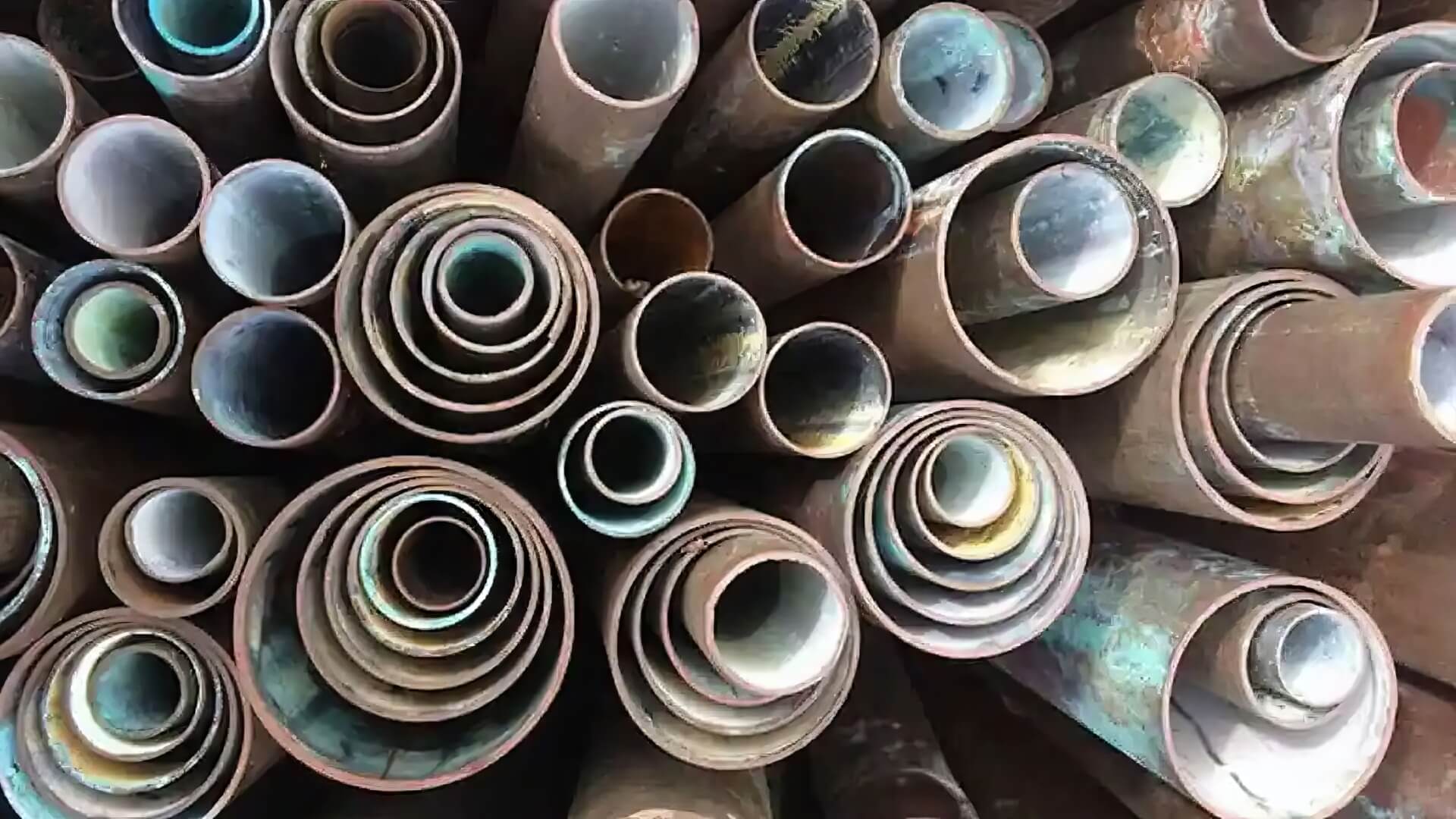
10 Signs Your Hot Water Heater Will Fail
If your water heater is old, leaking, rusty, noisy, not heating water properly or has low pressure, it could fail soon. Get your hot water system inspected today.
Read MoreTree roots pose a significant threat to your drains as they seek water and nutrients, gravitating to any weak spots in your sewer lines and pipes. Untreated, root intrusions can culminate in blockages, overflows and extensive sewer system repairs.
Growing tree roots compromise pipes, obstruct sewer lines, and if unchecked, can lead to total clogging. Even minor cracks in older drains can invite root infiltration, necessitating early removal to prevent extensive damage.
Neglected roots in sewer lines can trigger leaks, fissures, and even collapses, causing major plumbing problems. Strategically placed trees can mitigate foundational damage while still satisfying root moisture needs.
Regular CCTV inspections and sewer line cleanings, at intervals of 12-24 months, are essential in spotting and addressing tree root damage before it escalates. Trenchless pipe relining stands out as a durable strategy, effectively safeguarding sewer pipes against root invasion and fortifying against cracks.
Early indicators that suggest tree roots may be encroaching on the main sewer and damaging drainage pipes are:
Persistent blockages may signify root-induced integrity loss in your drainage system, with unchecked growth leading to critical plumbing failures. Prompt action reduces the extent of restoration required to repair damaged pipes and components. Our integrated approach of drain maintenance and advanced pipe solutions effectively combat roots causing sewer ingress.
If you suspect root damage, you should promptly get in touch with professional plumbing services to remove tree obstructions caused by roots in your sewer before they exacerbate.
Some pipe materials are more prone to tree root incursion than others, putting your sewage system at risk. Knowing the types of pipes in your system helps evaluate the threat of root invasions.
Older clay pipes and concrete your drain pipes provide little resistance against invading tree roots due to their porous nature and presence of cracks or joints that roots easily penetrate. Cast iron pipes installed prior to the 1970s are especially vulnerable due to deteriorating seals.
PVC pipes, being nonporous and often seamless, offer superior resistance against tree root penetration. HDPE pipes are a contemporary choice, with their solid plastic composition providing robust defense against root pressure.
The ease with which shallow root systems can intrude also relates to pipe depth and diameter. A shallow drain pipe with thinner walls is more likely to suffer root breaches than deeper, thicker pipes. Stormwater channels and the sewer main warrant thorough examinations owing to their substantial diameters.
Knowing your home’s pipe types and inspecting areas around trees your home will determine vulnerable spots needing priority repair or reinforcing. Replacing damaged sections with PVC or HDPE during routine plumbing maintenance greatly reduces future root risks.
Strategic tree planting, keeping root systems away from sewer lines, is essential to mitigate the threat of root invasions. As a general rule, when you plant trees in your garden, ensure they are at least 3 metres away from your sewer pipes to prevent damage.
When planning new trees, consult with a professional arborist on recommended tree species in your local Mortdale area that have less aggressive root systems. Choose less invasive trees such as magnolias and dogwoods, which embellish your garden while coexisting peacefully with plumbing.
Also, assess and remove trees near your plumbing if necessary, when they are large and manage their potential risk. Large trees may call for immediate action, where preventive measures can stop tree roots if these roots pose imminent threats to pipework. Alternatively, root pruning and measures to prevent roots can restrict root encroachment.
Yearly video inspections are invaluable for detecting tree roots infiltration needing attention. Trenchless pipe relining also fortifies pipes against future infiltration while avoiding major dig-ups.
With mindful planting choices and vigilant maintenance, trees and tree roots sewer plumbing can coexist safely. For all-inclusive plumbing solutions, contact Mortdale Plumbing if you’re unsure about managing tree roots threatening your pipes.
Root barriers are an effective defence to deter tree root encroachments and safeguard your pipes. Root barriers are physical obstructions made from thick plastic or rubber that protect your sewer by redirecting roots away from your plumbing system infrastructure.
These barriers block and redirect roots, preventing them from affecting your pipes. Over time, diverted roots curl away and no longer pose a threat. Ensuring professional installation is critical to achieving the correct depth and avoiding gaps that could permit roots to circumvent the barriers.
Common types of root barriers include:
Proper maintenance checks are still needed post-installation to address where tree roots grow that may have been overlooked. But overall, root barriers add an extra protective shield reinforcing pipes against a tree’s root invasion. If you observe roots nearing your pipes, need root barriers, or have other pipe concerns due to trees, contact Mortdale Plumbing for assistance.
If physical barriers fail, chemical deterrents placed in the sewer drain can eliminate roots and prevent future infiltrations. Root killer foams with copper sulphate or sodium hydroxide-based drain cleaners effectively eradicate roots when flushed down toilets.
However, extreme caution is necessary when using these acidic and caustic solutions, as they can severely damage your pipes if over-applied, and show little discrimination about tree roots. It’s also critical to never use chemical root killers near valued landscape trees you wish to preserve, as they may be absorbed and kill the entire tree.
An alternate chemical solution you can do is pouring rock salt into your sewer drain monthly to discourage future root growth. Consistent application of salt doesn’t completely prevent new root intrusions but slows existing infestation progression.
Chemical root control offers only temporary mitigation and does not correct the structural pipe issues that initially permit root entry. If chemicals prove ineffective, contact Mortdale Plumbing to inspect and enhance your drainage, protecting against further root damage.
Physical root pruning or full pipe replacement is essential, as tree roots can cause long-term damage, ensuring a permanent solution.
Pipe relining is a trenchless technology that can reinforce pipes and permanently block future root incursion without major excavations.
When pipes are lined with epoxy resins, a tough barrier coating is applied within drainage infrastructure that fills small cracks, keeping roots out your system. This creates an impenetrable shield fortifying pipes against the threat of tree roots entering.
The strong epoxy barrier can withstand acidic root secretions that usually decompose pipes. The smooth finish also assists liquid flow and reduces blockage risks. No digging is required, as the flexible resin material insertable through standard plumbing access points.
Relined pipes have also proven resilient against further structural weakening from established root masses. So relining offers both remedial and preventive benefits to secure drainage systems from invasive roots beyond temporary pipe clearing or root pruning.
Regular CCTV inspections to get rid of roots in suspect pipe areas requiring repair or reinforcement remain key. But relining susceptible pipes proactively will spare endless costs and hassles from recurring root damage over time.
Pipe relining is an effective preventive solution against future root intrusion because it essentially creates a pipe within a pipe. The process involves coating the inside of damaged plumbing with an impenetrable epoxy resin barrier.
To begin, a plumber like Mortdale Plumbing will thoroughly inspect pipes using a special CCTV drain camera. This locates existing root infestations and cracks allowing access. We then use state-of-the-art machinery to blow an inverted epoxy resin tube into the pipe’s interior.
As the flexible epoxy tube unfurls, it adheres directly to pipe walls, sealing cracks and preventing intrusion into your system as it hardens. Any part of the root system still inside the old pipes also become trapped and eventually die off once moisture sources are blocked.
The result is a ultra smooth, joint less and seamless new barrier that stops roots penetrating again.
Because the tough epoxy resin bonds at a molecular level, it cannot be penetrated by root secretions or chewing. The durable fabrication withstands soils, water exposure and abrasion over decades. Annual CCTV inspections still help monitor for new growths due to tree roots requiring removal.
So by essentially creating an impenetrable new pipe lining, relining seals out all moisture accessing points roots formerly exploited. Contact our team at Mortdale Plumbing to reinforce your pipes against further root intrusions.
Neglected tree root intrusions can swiftly amplify into urgent plumbing problems, creating emergent situations. Don’t wait until the first signs of sewage backup or sewer overflows to call us. Contact our team of licenced professionals at Mortdale Plumbing in Sydney for prompt assessments and permanent solutions to tree root damage.
For over 25 years, we’ve helped homeowners across the St George and wider Sydney area resolve their tree root problem efficiently. We then provide tailored solutions to clear current obstructions, fortify drainage from future root infiltration and protect surrounding trees using non-invasive techniques.
Our detailed CCTV pipe inspections accurately identify and remove tree roots causing blockages and vulnerable cracks requiring repair.
Trusted methods we offer to address issues growing your pipes include:
Don’t wait until roots have completely invaded drain lines causing leaks, fractures and backups. Prevent exponential repair costs by booking an inspection today on 1300 349 338 or emailing jobs@mortdaleplumbingservices.com.au. Our solutions keep roots out for good.
If your water heater is old, leaking, rusty, noisy, not heating water properly or has low pressure, it could fail soon. Get your hot water system inspected today.
Read MoreIf you have plumbing fixtures that are over 10 years old or showing signs of wear like leaks and cracks, it’s important to replace them to prevent more costly water damage in the future. Replacing worn fixtures improves water efficiency.
Read MorePipe relining is a trenchless method that renews pipes from the inside out. It involves draining, drying and scrubbing the pipe interiors before applying materials like silicone, PMMA or epoxy resins to create a resilient, soft, temporary liner inside the existing pipes.
Read MoreMortdale, 2223 NSW
We will call back as soon as possible.




